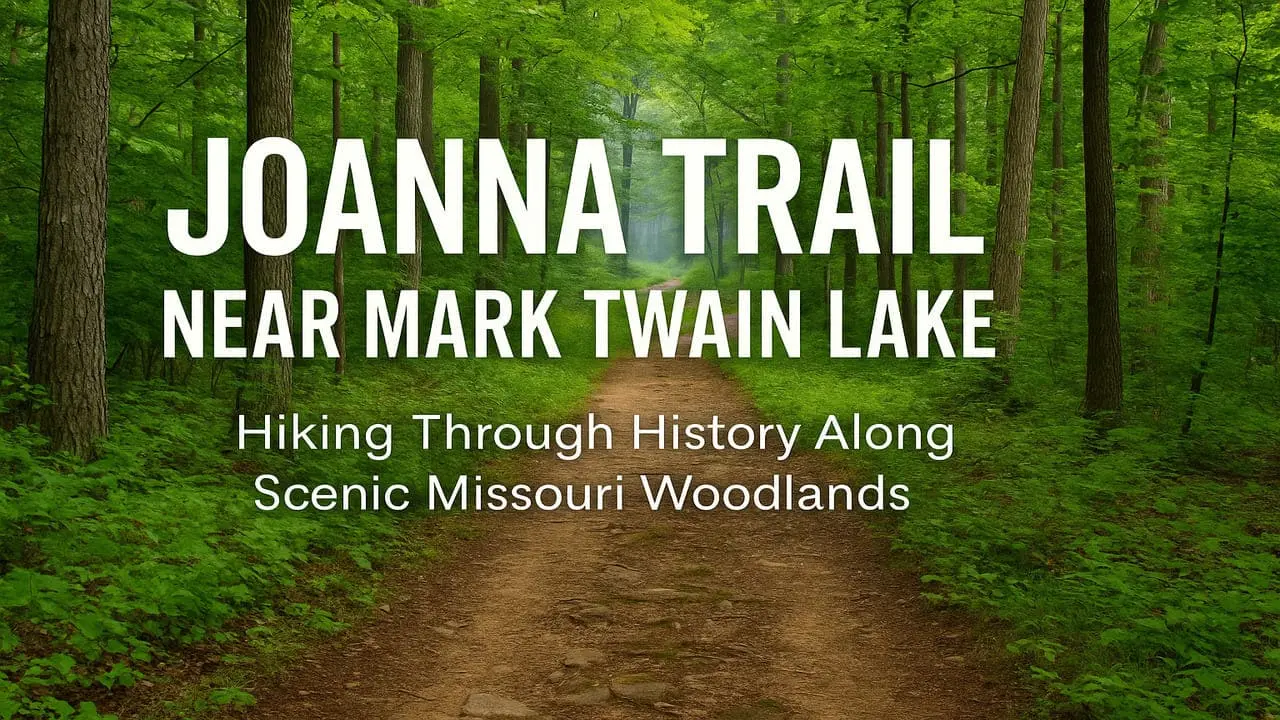
Visit MarkTwain Lake – Joanna Trail is one of the most captivating and lesser-known hiking experiences near Mark Twain Lake. This historic trail winds through the Mark Twain State Park and Mark Twain State Forest, offering a perfect combination of natural beauty, historical landmarks, and peaceful solitude. For travelers, campers, and nature lovers visiting the lake, the Joanna Trail serves as an immersive escape into Missouri’s rugged past and unspoiled woodlands.
While often overshadowed by boating and fishing activities at the lake itself, the Joanna Trail is a hidden treasure for those seeking a deeper, more grounded connection with the landscape.
The Joanna Trail is more than just a footpath it’s a living thread through history. It stretches across a variety of landscapes, including dense hardwood forests, open glades, and scenic ridgelines overlooking the waters of Mark Twain Lake.
The trail was name in honor of Joanna, Missouri, a now-lost 19th-century village that once thrived near the Salt River. As you hike along its route, you may encounter traces of this past from the foundations of long-gone cabins to the remains of pioneer-era roads swallowed by the woods.
Hikers are often struck by how deeply root the trail feels, not just in geography, but in time. Interpretive signs placed along portions of the trail help visitors imagine what life was like centuries ago, when the region was part of the western frontier.
“Read More: Best Outdoor Playgrounds Puncak Jakarta, Fun Rides for Kids Adventures”
The Joanna Trail extends for over 8 miles, making it ideal for both casual day hikes and more strenuous backcountry treks. The terrain is moderately challenging in places, featuring rolling hills, rocky outcroppings, and creek crossings that add variety to the journey.
What makes the Joanna Trail truly special is the diversity of its natural scenery. Hikers pass through:
This trail is also a haven for birdwatchers and photographers, especially during migratory seasons when warblers, hawks, and even bald eagles make appearances. Deer, wild turkeys, and the occasional fox can also be spot in the early mornings or late afternoons.
For those who enjoy a slower pace, the trail includes numerous rest areas and scenic spots perfect for reflection or picnics. It’s also pet-friendly, making it a great outing for families traveling with four-legged companions.
Access to the Joanna Trail is convenient from several points around Mark Twain Lake, especially near the Mark Twain State Park campground and the Buzzard’s Roost Trailhead. Free parking is available, and maps are post at major entry points.
The trail is well-marked with signage and blaze marks, though hikers are advised to bring a printed map or use GPS tracking, as cell service can be intermittent in deeper parts of the forest.
Camping is available nearby at both Ray Behrens and Indian Creek Campgrounds, offering modern amenities and proximity to the lake’s other attractions. Trail users can easily combine a day hike on the Joanna Trail with a weekend of camping, swimming, or fishing making it a well-rounded destination for outdoor enthusiasts.
Local shops and outfitters around the town of Perry, Missouri, provide supplies, snacks, and souvenirs for trail-goers. For those interested in a more rustic stay, cabins and lodges in the area also offer direct trail access or scenic views of the surrounding woodlands.
Rather than closing this article with a general summary, it’s worth highlighting an important and ever-changing topic for hikers: the seasonal beauty of the Joanna Trail and responsible trail use.
Each season along the Joanna Trail offers a unique experience. In spring, the forest comes alive with budding wildflowers, migrating birds, and fresh green foliage. Summer brings lush vegetation and the buzzing energy of the woods, though hikers should plan for heat and ticks. Autumn is arguably the most stunning time to hike, as the leaves explode into vibrant shades of red, orange, and gold. Winter, while quieter, offers a peaceful, stark beauty as bare trees reveal deeper views of the landscape.
With this variety, it’s important for all visitors to practice Leave No Trace principles. Staying on marked paths, packing out trash, and respecting local wildlife ensures that the trail remains pristine for generations to come.
Additionally, hikers are encouraged to check weather forecasts and trail conditions before setting out, especially after rain when paths may become slippery or washed out in certain segments.